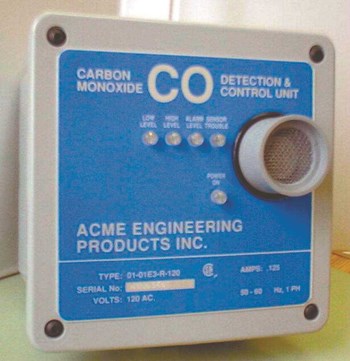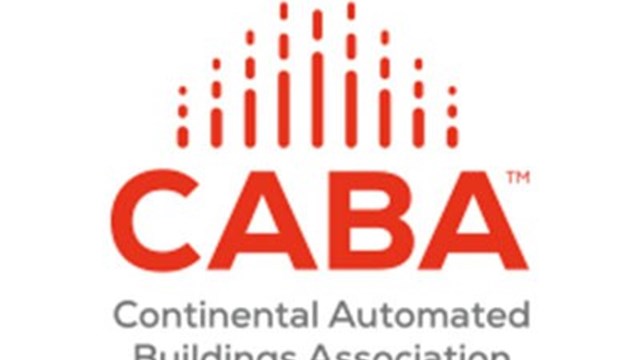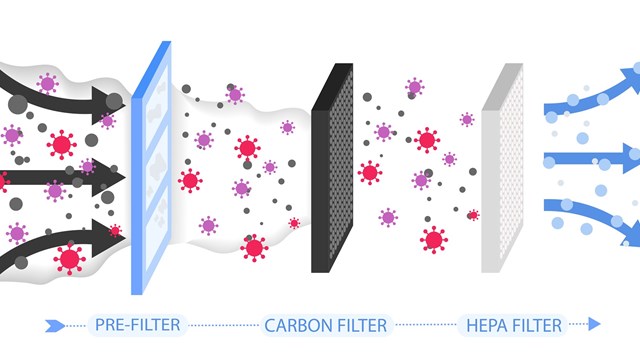
Other building hazards don’t make it so easy. Toxic substances like lead, asbestos, radon, carbon monoxide and mold are tough to detect, can’t be felt or smelled, and can be hidden away inside walls, seep into basements, or even be imbedded in paint, creating a potentially hazardous situation for building residents. The kicker is that when it comes to these “hidden dangers,” often nobody knows they’re there until the damage—sometimes tragic—is done.
Lead
If you live in a pre-1960 tri-state area building or you are repainting or otherwise remodeling any home that was built before 1960, there is a distinct chance that the existing paint on your walls contains lead. In 1991, the Environmental Protection Agency (EPA) named lead the number-one environmental threat to the health of all children in the United States.
Lead isn’t necessarily dangerous in and of itself, if left alone. The true danger of lead-painted walls comes when
Lead exposure can cause a host of health problems in both children and adults. It can affect the brain, central nervous system, blood cells, and kidneys. Lead exposure has also been linked to birth defects and developmental delays in children.
According to materials published by the Legal Services of New Jersey (LSNJ) advocacy group, New Jersey law does not allow using lead paint on toys, furniture, or dwelling surfaces—inside or out—that are “readily accessible” to children, and states that hazardous lead paint on inside or outside surfaces of a dwelling constitutes a public nuisance.
Testing and Removal of Lead
Building owners and management companies must inspect for lead-based paint hazards annually, or more often if residents have complained of conditions that might indicate lead hazards, such as a leaking pipe or roof.
“The law says anything [built] after 1978 doesn’t have to be inspected,” says Bob Carlucci, a New Jersey State-certified lead inspector/ risk assessor with EMC Lead Testing LLC in West Caldwell, “but if it was built before
Jennifer Carey, principal of New York City-based JLC Environmental Consultants, Inc. explains that her company tests for lead paint using x-ray fluorescence, which is a form of testing that isn’t destructive and doesn’t release any lead that might be present in a building. “We also can test paint chips—which is a destructive form of testing—and have the analysis back in 24 to 48 hours,” says Carey.
Carlucci uses an instrument called an XRS Lead Paint Analyzer to test for lead paint. “It’s done on-site,” he says. “It’s like an x-ray machine sort of, and gives you instant results. With that method, there’s no more taking chips and sending them off to the lab.”
The cost for lead testing services “hinges on how big the apartment or house is,” Carlucci continues. “It depends on how much needs to be done, it depends on what year the building was built... on how many apartments need to be inspected. If the building was built between certain years, then you inspect certain portions. But if it was built before 1960, then you have to inspect more of it.”
According to LSNJ, if lead is found in a New Jersey residential building, the local health department must move in to address the problem. “Health departments may tell you they do not have to inspect your home if your child has not actually been lead-poisoned,” say LSNJ, “but that is not so. Inform them that state laws N.J.S.A. 24:14A-5 and N.J.S.A. 26:3-46 stipulate that they must make sure hazardous lead paint is abated.”
On March 31 of 2008, the EPA issued a rule requiring the use of lead-safe practices and other actions aimed at preventing lead poisoning. Under the rule, beginning in April 2010, contractors in all states performing renovation, repair, and painting projects that
Further, if abatement for a lead-based paint hazard is to take place, the contractor must post signs reading “Warning: Lead work area-poison-no smoking or eating,” and make sure they stay in place until the work is done. Landlords and contractors must also explicitly warn residents to stay out of the work area.
CO: Invisible and Deadly
Carbon monoxide earns the award for being the worst of these hidden dangers simply because it’s highly toxic—ultimately deadly—and can sneak up on anyone in a building without any warning. It has no odor to warn you that it’s leaking, has no taste, and it doesn’t irritate your skin. Carbon monoxide is the product of the incomplete combustion of fossil fuels such as oil, natural gas, gasoline, wood and coal. It can come from systems in a building that burn fossil fuel, such as furnaces, water heaters, fireplaces and parking garages.
Estimates of the scope of CO-related fatalities and illnesses vary, but according to the American Lung Association (ALA), nearly 500 people die every year from carbon monoxide poisoning, and 5,000 more are treated for exposure. This exposure occurs more often in the winter months when these heating systems are used and windows and doors are sealed up.
According to the ALA’s website, the only warning signs of carbon monoxide poisoning are the physical symptoms of CO poisoning: headaches, dizziness, tiredness and nausea—all symptoms that could easily be mistaken for a virus or flu. The affected person may choose to lie down and sleep, which can be deadly if the carbon monoxide is infiltrating their bedroom.
To reduce the risk of carbon monoxide exposure, homes and apartments should be equipped with at least one approved carbon monoxide detector installed within 15 feet of the primary entrance to each sleeping room. “Approved” CO detectors are those marked with a “UL” signifying their approval by Underwriters Laboratory and can be battery-operated, or electrical with battery backup in case of an extended power outage.
Asbestos
Older homes in any area of the country may have also been built with products that contain asbestos, such as pipe and furnace insulation materials, roofing shingles, millboard, textured paints, and floor tiles. According to the EPA, asbestos is the name given to a number of naturally occurring, fibrous silicate minerals mined for their useful properties such as thermal insulation, chemical and thermal stability, and high tensile strength. Asbestos was commonly used as an acoustic insulator, and in thermal insulation, fire proofing and other building materials. Useful as the material is, exposure to asbestos can cause serious lung disease that can lead to disability and death.
Robert Weitz, chief operating officer of RTK Environmental Group in Stamford, Connecticut and New York City is an American Indoor Air Quality Association (AIAQA)-certified microbial investigator and EPA-licensed risk assessor. He says that it’s common to perform asbestos tests on buildings that are in the midst of a renovation or remodeling and for some reason have damaged a suspect material.
“For example, inside the cavities they may have pipe wrap that was suspect,” says Weitz. “We take bulk samples of suspect material and send it to a lab for analyzing. If the building has asbestos, the remediation must be done by a professional asbestos remover.”
According to Carlucci, “When you test for asbestos you have to test all the building components: all the sheetrock and tiles, and glue that holds the tiles down. And unlike lead paint, you actually have to take samples [of possible asbestos-contaminated materials]… You don’t have that hand-held unit that analyzes it—you have to actually take a piece of the tile and send it to the lab to be analyzed under microscope.”
Asbestos tests can begin at $300, but the final cost depends on the size of the building and what the management wants tested. “Sometimes [a] management company won’t test the whole building,” says Weitz. “They’ll only test the unit if the tenant has an issue.”
Radon Risks
Radon isn’t something commonly found in urban apartment buildings, but it’s a very real threat in suburban and rural areas of New Jersey. Radon comes from the breakdown of uranium in soil, rock, and water. It seeps into a home through foundation cracks and through well water and like carbon monoxide, you can’t see, smell, or taste it. Radon can build up to dangerous levels, and breathing it in over a period of time can lead to lung cancer. Radon is a leading cause of lung cancer in the United States, claiming approximately 20,000 lives each year.
Radon tests can be purchased and used in any building or can be conducted by any professional tester. The amount of radon in the air is measured in picoCuries per liter of air (pCi/L). The EPA estimates that one in 15 homes has a radon level of 4 pCi/L or more, which is considered high. If your building or home scores that high, there are ways to fix the problem.
Every state has a radon contact (you can find yours by visiting www.epa.gov/iaq/whereyoulive.html and clicking on your state) and specific requirements associated with providing radon measurements. A venting system can be installed to exhaust the radon and the area should be re-tested once the changes have been completed.
Mold
Not only is mold gross, there’s some scientific evidence to suggest that it may pose significant health risks to residents of mold-infested buildings. Mold problems can be visible in bathrooms and in leaky areas of a home, or invisible and hidden behind walls. It’s typically found in buildings affected by water damage. If a building is sealed too tightly (either during construction or as a result of overzealous waterproofing) it must also be moisture retardant, which means that holes and gaps need to be sealed (i.e. caulked) to prevent air leaks and moisture buildup.
What makes mold a health issue? When mold is disturbed, spores are released into the air and produce chemicals called mycotoxins which, when ingested or inhaled—have been linked to adverse reactions in people who are particularly sensitive to them or who are exposed to them in large amounts or over a long period of time. The symptoms of mold exposure include chronic runny nose, eye irritation, cough, congestion, and aggravation of asthma.
You cannot simply sponge off or cover up a mold problem. Mold needs to be removed by a properly trained professional with experience performing microbial investigations—especially if heating, ventilating, air conditioning (HVAC) systems or large occupied spaces are involved.
Professional mold remediators use several methods of testing including inspecting, air testing, and physical removal of samples with a sterile swab or piece of adhesive tape, then test the sample for spore counts.
Passing the Test
“Obviously if there is sign contamination, all residents should be notified and an expert should be hired to verify the situation and take remedial steps to fix it,” states Manhattan-based attorney, Todd E. Soloway, the chair of Pryor Cashman LLP’s Real EstateLitigation Group. “The two most important aspects are communication with your residents and being responsive to the issues.”
How do buildings get in trouble when it comes to hidden dangers? Simple, Soloway says, they fail to act. “Where I see buildings get into trouble is they let the problems grow and fester and the unit owners get upset and threaten for their inaction.”
There is plenty of information available through various organizations and websites so there is no reason that any building should be subjected to a hidden danger.
Some helpful resources include:
• The New Jersey Division of
Consumer Affairs:
www.njconsumer affairs.gov
• National Lead Information Center: (www.epa.gov/lead/pubs/nlic.htm)
or call 1-800-424-LEAD [5323].
• Carbon Monoxide Kills: www.car bonmonoxidekills.com/carbon_mon oxidedetector-nyc.htm
• Mold: EPA: http://www.epa.gov /iaq/molds/moldguide.html
• Asbestos: www.epa.gov/asbestos/
As a board member or managing agent, it’s your job to be mindful not only of the hazards you can see, but also of those you can’t see. By being aware of the various risks and implementing a regular testing regimen for your building or association, you can make sure that your community is protected from the harm these hidden hazards can cause.
Lisa Iannucci is a freelance writer and author based in Poughkeepsie, New York.






Leave a Comment